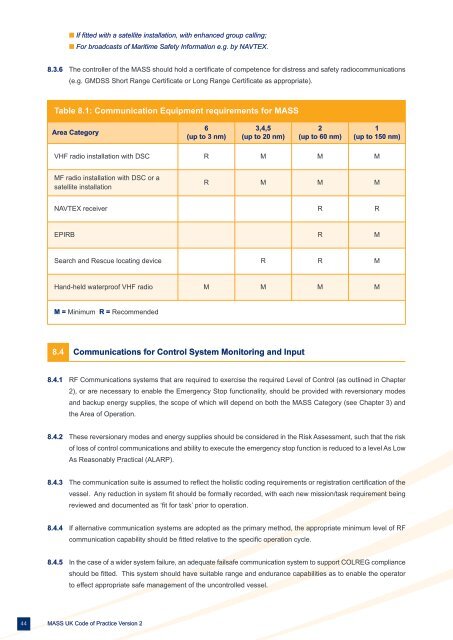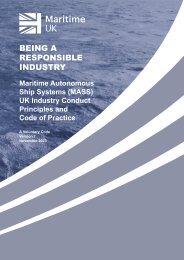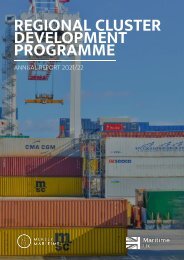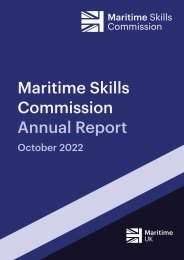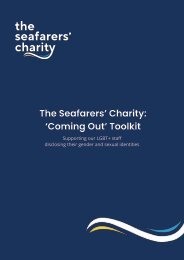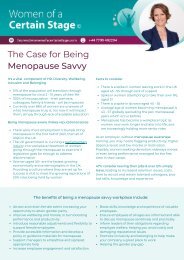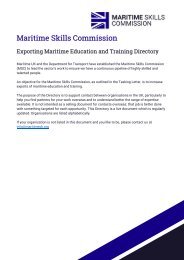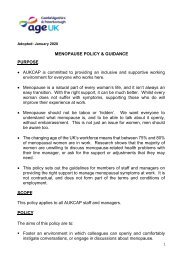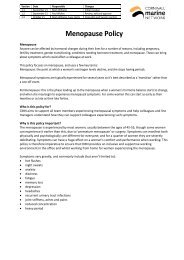Maritime UK MASS CoP v2
Create successful ePaper yourself
Turn your PDF publications into a flip-book with our unique Google optimized e-Paper software.
n If fitted with a satellite installation, with enhanced group calling;<br />
n For broadcasts of <strong>Maritime</strong> Safety Information e.g. by NAVTEX.<br />
8.3.6 The controller of the <strong>MASS</strong> should hold a certificate of competence for distress and safety radiocommunications<br />
(e.g. GMDSS Short Range Certificate or Long Range Certificate as appropriate).<br />
Table 8.1: Communication Equipment requirements for <strong>MASS</strong><br />
Area Category<br />
6<br />
(up to 3 nm)<br />
3,4,5<br />
(up to 20 nm)<br />
2<br />
(up to 60 nm)<br />
1<br />
(up to 150 nm)<br />
VHF radio installation with DSC R M M M<br />
MF radio installation with DSC or a<br />
satellite installation<br />
R M M M<br />
NAVTEX receiver R R<br />
EPIRB R M<br />
Search and Rescue locating device R R M<br />
Hand-held waterproof VHF radio M M M M<br />
M = Minimum R = Recommended<br />
8.4 Communications for Control System Monitoring and Input<br />
8.4.1 RF Communications systems that are required to exercise the required Level of Control (as outlined in Chapter<br />
2), or are necessary to enable the Emergency Stop functionality, should be provided with reversionary modes<br />
and backup energy supplies, the scope of which will depend on both the <strong>MASS</strong> Category (see Chapter 3) and<br />
the Area of Operation.<br />
8.4.2 These reversionary modes and energy supplies should be considered in the Risk Assessment, such that the risk<br />
of loss of control communications and ability to execute the emergency stop function is reduced to a level As Low<br />
As Reasonably Practical (ALARP).<br />
8.4.3 The communication suite is assumed to reflect the holistic coding requirements or registration certification of the<br />
vessel. Any reduction in system fit should be formally recorded, with each new mission/task requirement being<br />
reviewed and documented as ‘fit for task’ prior to operation.<br />
8.4.4 If alternative communication systems are adopted as the primary method, the appropriate minimum level of RF<br />
communication capability should be fitted relative to the specific operation cycle.<br />
8.4.5 In the case of a wider system failure, an adequate failsafe communication system to support COLREG compliance<br />
should be fitted. This system should have suitable range and endurance capabilities as to enable the operator<br />
to effect appropriate safe management of the uncontrolled vessel.<br />
44<br />
<strong>MASS</strong> <strong>UK</strong> Code of Practice Version 2


